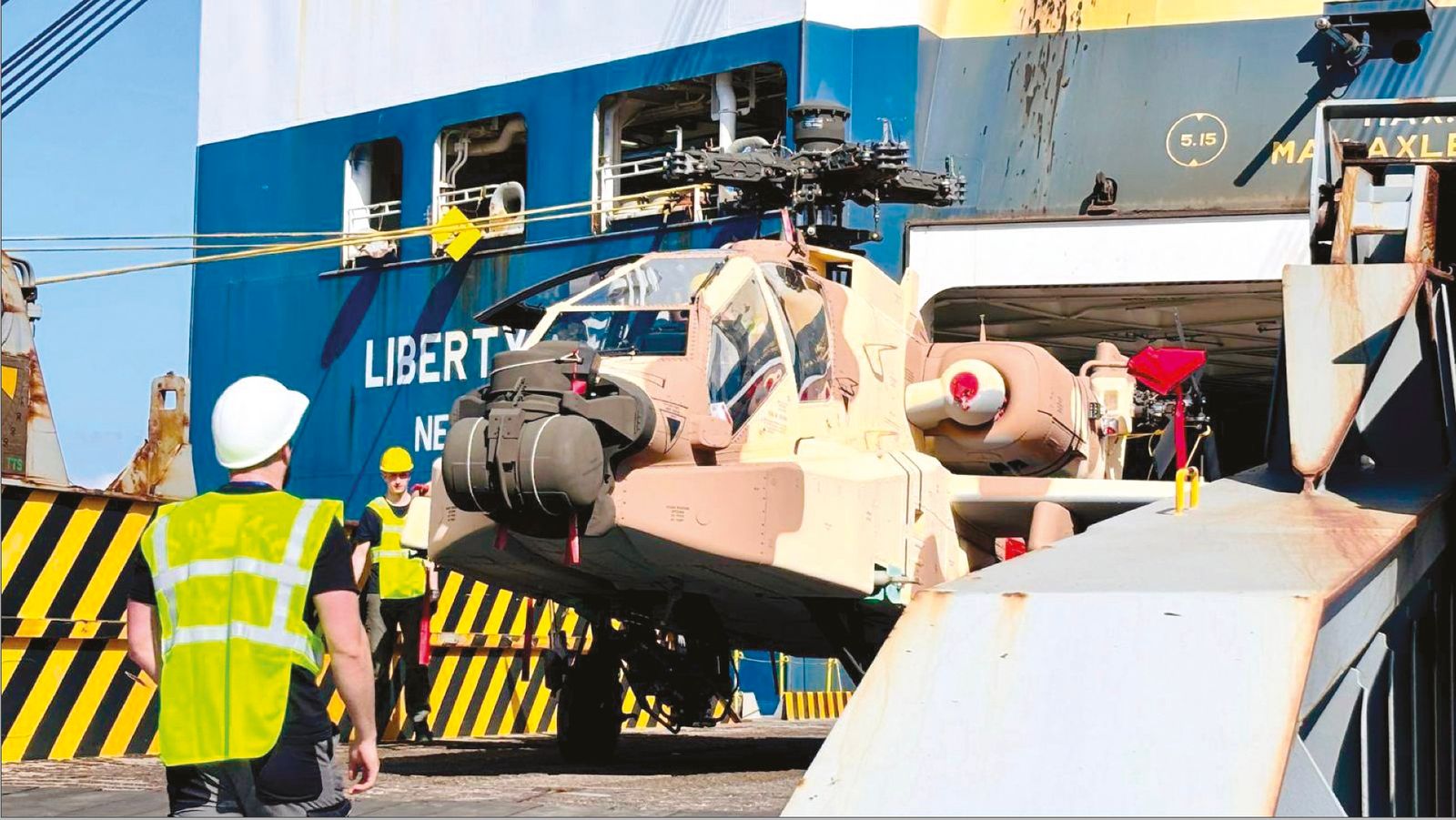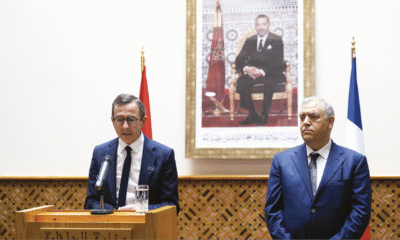International
FAR: Fifteen Years of Strategic Military Acquisitions
The recent delivery of AH-64 Apache helicopters, a symbol of the Morocco-USA strategic partnership, crowns an ambitious and coherent strategy to qualitatively strengthen Morocco’s military capabilities in the face of current challenges.

On March 5, 2025, unusual activity animated the Salé military airport. It was delivery day: the AH-64 Apache attack helicopters were officially received by the Kingdom, in the presence of high-ranking officials, including Moroccan and American military officers and government members.
This event highlights the Kingdom’s privileged status as a key strategic partner of the United States, now benefiting from exclusive access to the best in weaponry and combat helicopters. However, this spectacular acquisition is not surprising for close observers of Morocco’s defense sector.
It fits naturally into a coherent and continuous strategy of strengthening and modernizing the FAR’s military capabilities, undertaken for nearly fifteen years. Why this strategy? And what is its real significance in the face of today’s challenges?
Regional Tensions and the Arms Race
For about fifteen years, the security environment in North Africa and the Sahel has been marked by unprecedented instability, exacerbated by growing hostility from the Algerian regime toward Morocco. Thanks to its significant oil resources, Algeria has engaged in a frantic arms race for several years.
Behind this competition lies a clear ambition: to establish a military balance of power largely in its favor against the Kingdom. Added to this is a worrying increase in futile harassment attempts by Polisario militias (who broke the ceasefire in November 2020), fueled by direct military support from certain hostile countries, notably through the supply of combat drones.
A Strategic Response Adapted to Threats
The growing security crisis in the Sahel, now considered the world’s epicenter of terrorism according to the latest Global Terrorism Index 2025, also requires a firm and appropriate response from the Kingdom.
Faced with these complex challenges, Morocco has for several years focused on qualitative modernization, preferring cutting-edge technology over a purely quantitative approach. While Algeria regularly ranks among Africa’s top arms importers, according to SIPRI, Morocco favors strategic acquisitions.
Since 2011, the acquisition of 24 American F-16C/D Block 52+ fighters, delivered by Lockheed Martin, marked the start of a strategy to strengthen the FAR’s military capabilities in areas where neighboring countries’ armed forces, especially Algeria and Spain, previously had a clear technological and quantitative advantage.
It is worth noting that the technological leap between the new F-16s and the aging fleet of American F-5s and French Mirage F1s is significant, which at the time raised concerns among the region’s military staffs, worried to see the FAR reaching a decisive new level in air superiority.
Following this, the Royal Navy also strengthened itself with the delivery of three Dutch Sigma-class multi-mission frigates in 2012, then the French Fremm multi-mission frigate in 2014, giving Morocco the means to protect its coastline and a deterrent maritime force capable of projecting power on the high seas. But it is especially since 2020 that the FAR have clearly accelerated the pace of their acquisitions of breakthrough weapons.
In 2021, the delivery of Turkish Bayraktar TB2 drones made Morocco the first African country to purchase this globally best-selling drone, thus allowing the FAR to significantly strengthen their aerial surveillance, reconnaissance, and precision strike capabilities.
The operational entry of Koral electronic warfare systems the same year, followed by heavy Akinci combat drones in February 2025, gives the Moroccan armed forces a decisive strategic advantage, marking a major technological leap in electronic warfare, radar jamming, and remote surveillance, thus enhancing their ability to operate in highly contested environments.
Meanwhile, the delivery of French Caesar mobile artillery guns from 2022 and the AH-64E Apache attack helicopters in 2025 now provide the FAR with precise and reactive strike capabilities, notably to counter ground incursions by infantry or armored troops.
Missile defense has not been neglected, with the upcoming acquisition (planned for 2025) of American Patriot PAC-3 systems, intended to protect sensitive sites and counter any aerial or ballistic threat, especially against Algerian army fighter jets and Iskander missiles.
This arsenal is complemented by American Abrams heavy tanks and Israeli-origin satellite intelligence and surveillance capabilities, completing the FAR’s defense capacities across all domains: combat aviation and navy, ground forces, air defense systems, electronic warfare, and surveillance and intelligence capabilities.
Morocco Strengthens Its Military Autonomy
The FAR are continuing this ambitious strategy with other expected acquisitions, such as the American F-16 Block 70/72 fighters, scheduled for delivery from 2027, the formidable M142 Himars rocket launchers, and the probable acquisition of French or German attack submarines, regularly mentioned by specialized media but not yet confirmed.
With the aim of strengthening its strategic autonomy, Morocco aims to develop a sovereign defense industry by producing weapons and military equipment domestically, through partnerships with foreign powers. The Kingdom has already started this dynamic by including technology transfer and local industrialization clauses in its arms acquisition contracts, thus requiring manufacturers to partially produce in Morocco.
For example, the Indian group Tata will supply Morocco with light 4×4 armored vehicles, with local assembly starting in 2025, thus strengthening the industrialization of the Kingdom’s land defense. At the same time, the Brazilian group Embraer will build and partially assemble tactical transport aircraft, allowing Morocco to benefit from technology and know-how transfers to build a strong and sovereign Moroccan defense industrial and technological base.
This Moroccan strategy of modernizing its military capabilities is increasingly oriented toward encouraging major defense industry groups to produce advanced equipment locally. By developing a military industrial ecosystem on its soil, Morocco will eventually be able to more effectively meet the operational needs of its troops, reduce its dependence on foreign suppliers, and position itself as an emerging player in arms production in Africa and the Arab world.












